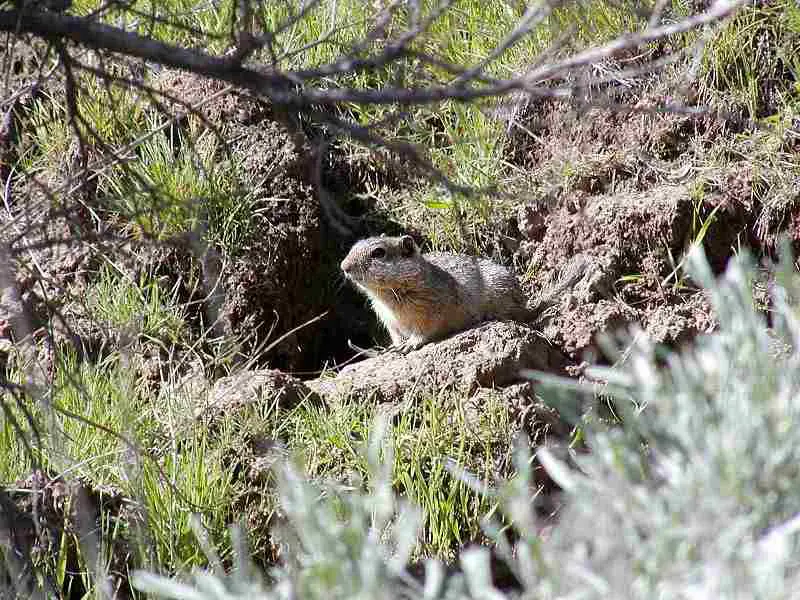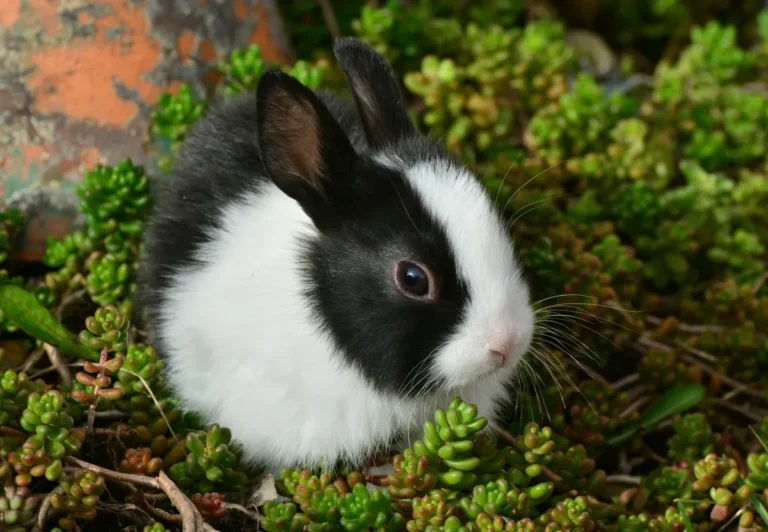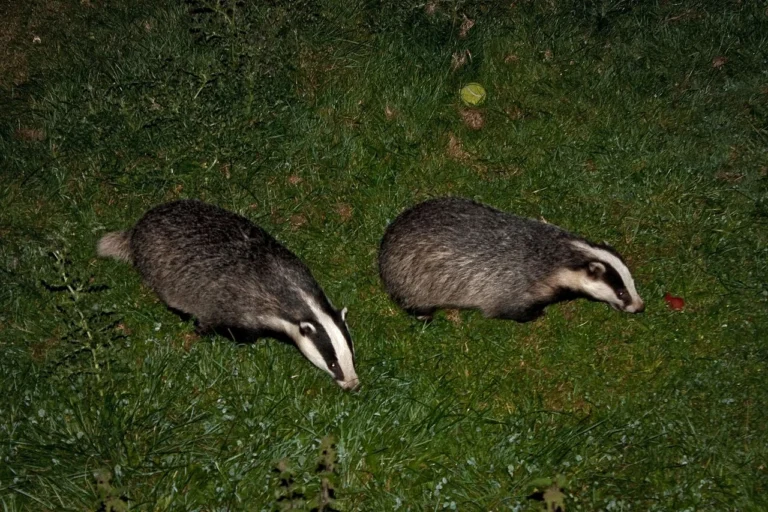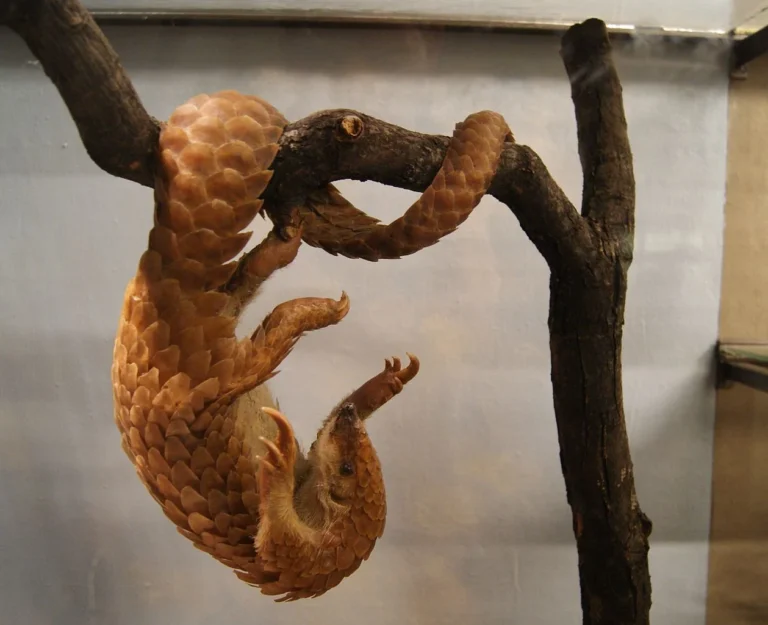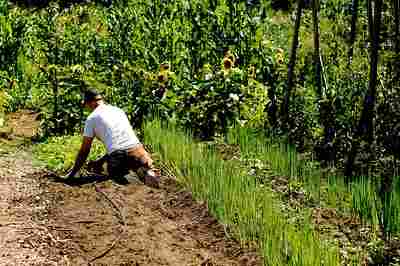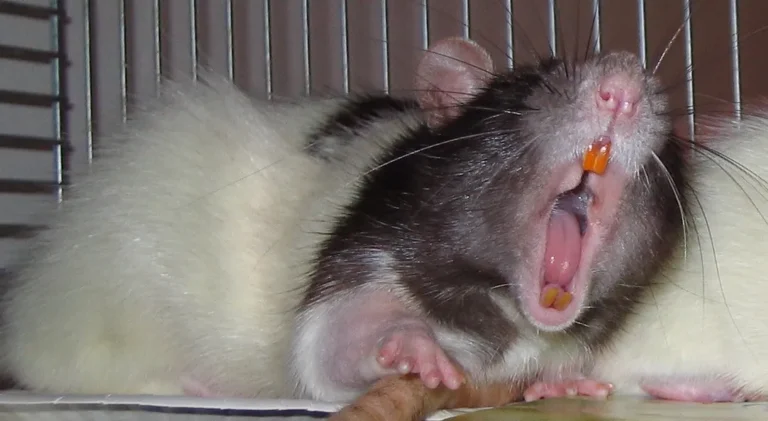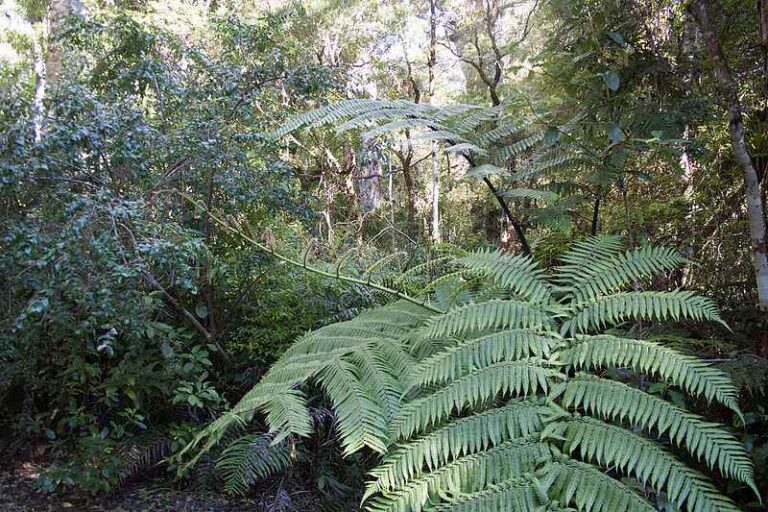11 Chaparral Biotic Factors and Their Ecologic Relevance
Chaparral biotic factors are; autotrophs, herbivores, carnivores, omnivores, decomposers, commensalism, mutualism, parasitism, competition, predation, and organic adaptation.
This article discusses the Chaparral biotic factors and their relevance to the ecosystem, as follows;
1). Autotrophs (as one of the Chaparral Biotic Factors)
Autotrophs in the Chaparral biome are biotic components that function as primary producers within the ecosystem.
These organisms are mostly plants, and have evolved multiple, unique adaptations that help them to survive in the challenging, and often arid, conditions of their habitat.
Autotrophs constitute the foundation of the food chain, from where they support a complex network of organisms, and influence various ecological processes.
Relevance of Autotrophs in the Chaparral Ecosystem
The relevance of autotrophs in the Chaparral ecosystem can be traced to their roles in primary production, energy provision, habitat formation, water conservation, nutrient cycling, food web sustenance, and contribution to biodiversity.
Autotrophs (plants) are primary producers that initiate the process of energy-transfer in the Chaparral ecosystem.
During photosynthesis, they capture solar radiation, and use it to drive biochemical reactions that transform inorganic raw materials like carbon dioxide, and water into energy-rich biomass in the form of organic compounds like sugars [10].
This stored energy in biomass, serves as the basis of continuity for the entire food web.
As implied above, autotrophs are a critical energy resource for the Chaparral ecosystem.
Energy captured by autotrophs in the process of photosynthesis, supports not only their own growth and metabolism, but also sustains consumers including herbivores, carnivores, and omnivores; by serving directly or indirectly as fuel to meet their energy needs.
Another function that makes Chaparral autotrophs relevant is habitat Formation.
Autotrophs play a role in creating and modifying the physical environment of the Chaparral biome. Their presence influences Chaparral abiotic factors like; microclimate, soil structure, and moisture retention. They create shelter and habitat for a broad range of organisms, which include small mammals and insects.

Several Chaparral autotrophs have evolved adaptations for water-use minimization, in order to cope with the limited water availability of their habitat. These adaptations include the possession of tough drought-resistant tissues, deep root systems and small leaves to minimize water loss through transpiration.
Wildfire hazards occur naturally in the Chaparral biome. Some autotrophs have developed adaptations over time, to recover and regenerate after fire events [11]. An example of this is the ability of certain species to regenerate from heat-triggered seeds, or re-sprout from underground structures after these structures have been stimulated by the thermal effects of fires.
Nutrient cycling is an essential function in the Chaparral ecosystem, to which autotrophs contribute.
These primary producers extract nutrients from the soil and make them available to the entire biotic community. They also improve soil stability through root systems, which can help mitigate erosion during heavy rainfall or intense wind-storm events.
As stated earlier, autotrophs build the foundational energy reservoir for herbivores and other consumers. They therefore support a diverse organic community that includes mammals, insects, birds, and even other plants.
Overall biodiversity and species richness in the Chaparral biome, are directly influenced by the abundance and diversity of autotrophs.
This is because various plant species support different herbivores, which in turn determine the composition, dynamics and sustainability of higher trophic levels.
2). Herbivores
Herbivores in the Chaparral are also an important biotic component, and influence the biodiversity of this ecosystem, while playing a role in nutrient cycling and energy flow.
Animals referred to as herbivores, are those that primarily consume plant materials as their source of food.
Within the Chaparral biome, various herbivores occur, whose survival can be attributed to their evolution of unique adaptations for feed on the native plant species and eluding predators.
Relevance of Herbivores in the Chaparral Ecosystem
The relevance of herbivores in the Chaparral ecosystem; can be understood in terms of their contributions to energy transfer, nutrient cycling, population dynamics, seed dispersal, predator-prey interactions, ecosystem engineering, evolution and adaptation. These areas are all discussed.
Energy transfer is carried out by herbivores, which occupy the second trophic level in the food chain, and directly feed on primary producers (plants).
The herbivores convert energy stored in plant matter, into their own energy and biomass, which then becomes available to predatory or scavenging organisms in higher trophic levels, including carnivores and omnivores.
Population dynamics of plants, are influenced heavily by the presence and activities of herbivores, which regulate the abundance of vegetation through feeding.
Overgrazing by herbivores can result in decreased plant cover, and can alter the structure(s) of plant communities, in turn affecting the overall structure of the ecosystem.
Herbivores are involved in nutrient cycling because they consume plants and excrete waste, which breaks down and returns nutrients to the soil. Their body remains after death may also undergo biodegradation, and release nutrients for plant uptake.
This leads to continuous recycling of nutrients, which is crucial for the growth and health of plants in the ecosystem.
Seed dispersal is facilitated by some herbivores, when they consume seed-bearing plant materials like fruits, and subsequently spread the seeds through their droppings [7]. This process supports the establishment of new plant colonies in virgin areas of the Chaparral biome.
Predator-prey interactions in the Chaparral and indeed all terrestrial habitats, include herbivores as a central factor.
Herbivores are a major food source for carnivorous predators. Their interactions with these predators can influence herbivore behavior, physiology, abundance, survival rate; as well as predator dynamics, all of which contribute to the balance of the ecosystem.
Ecosystem/habitat engineering by herbivores includes their tendency to shape and modify the physical structure of the Chaparral ecosystem, through their feeding, burrowing, locomotive, herding, and migratory activities.
For example, browsing herbivores can influence shrub growth and species composition; while burrowing herbivores actively modify the soil and landscape.

Herbivores in the Chaparral are both drivers and examples of organic adaptation. They have evolved specialized features to cope with the challenges of their environment, including water-conservative digestion, drought-resistant feeding strategies, and elusive/avoidant behaviors to escape predators.
Examples of Herbivores in the Chaparral
Examples of herbivores in the Chaparral are;
1. Black-tailed Jackrabbit (Lepus californicus)
2. Mule Deer (Odocoileus hemionus)
3. Mouflon (Ovis musimon)
4. California Chipmunk (Neotamias obscurus)
5. California Ground Squirrel (Otospermophilus beecheyi)
3). Carnivores (as one of the Chaparral Biotic Factors)
Carnivores are meat-eating animals, which constitute a vital biotic factor in the Chaparral ecosystem.
They occupy multiple, high trophic levels in the food chain, and exert top-down control on herbivore populations, while influencing the overall dynamics of the biome [5].
Carnivores play a key role in maintaining ecological equilibrium, contributing to nutrient-cycling, and regulating prey populations.
Relevance of Carnivores in the Chaparral Ecosystem
The ecologic relevance of carnivores in the Chaparral arises from their contributions to predator-prey dynamics, population control, biodiversity, nutrient cycling, behavioral adaptation, and largescale trophic cascading.
Carnivores influence herbivore populations by preying on them. The predator-prey relationship established between these two groups, has a cascading effect on the entire ecosystem, because it prevents overpopulation and overgrazing among herbivores, and indirectly impacts plant communities.
Population regulation by carnivores may extend beyond the primary consumer (herbivore) trophic level, to affect small carnivores. This can have varied effects depending on specific attributes of the ecosystem.
Biodiversity is supported by the carnivores population, through its own inclusion in the species numbers of the ecosystem, and its effect on population sizes of lower species. Diversity is important for maintaining a healthy ecosystem and preventing imbalances from dominance by any singular species.
Like other biotic factors in the Chaparral, carnivores facilitate nutrient cycling by consuming animal biomass and recycling the inherent nutrients through their waste products. This continuous process of consumption and excretion, helps maintain nutrient balance in the ecosystem.
Behavioral adaptations and interactions of various organisms, are influenced by carnivores.
This includes the behavior of their prey, which is altered and modified as they are forced to adapt strategies to elude predators. Such behavioral changes often have far-reaching effects on both the physical environment and the energy pyramid.
Carnivores such as mountain lions, serve as apex predators in the Chaparral, occupying the top of the food chain. From this advantageous position, they have a significant impact on the entire ecosystem, and may help maintain its stability.
Examples of Carnivores in the Chaparral
Examples of carnivores in the Chaparral are;
1. Mountain Lions (Puma concolor)
2. Coyotes (Canis latrans)
3. Gray Foxes (Urocyon cinereoargenteus)
4. Bobcats (Lynx rufus)
5. Long-Tailed Weasels (Neogale frenata)
6. Golden Jackals (Canis aureus)
It must be noted that some of these animals, like the grey fox; can be listed among omnivorous animals of the Chaparral, as well. The inclusion of such animals in this section is due to animal biomass being a primary or preferred food source (and not necessarily the only food source) for them.

4). Omnivores
Omnivores in the Chaparral ecosystem, are animals that consume both plant and animal matter.
They are ecologically flexible and occupy a versatile niche, while contributing to nutrient cycling and energy flow. The adaptability of omnivores to different food sources, enables them to respond resiliently to changes like food-resource depletion.
Relevance of Omnivores in the Chaparral Ecosystem
The ecologic relevance of omnivores in the Chaparral can be summarized to include factors like; dietary flexibility, conservative resource utilization, population control, seed dispersal, and contribution to ecosystem health.
Omnivores are able to exploit a broad range of food sources, including plants, small mammals, insects, nuts, and fruits. By reason of this adaptability, they are able to thrive even in environments like the Chaparral where food availability constantly fluctuates.
Conservative utilization of resources is achieved by omnivores, as their ecologic flexibility enables them utilize resources that may be underutilized by other organisms.
For example, some omnivores feed on plant materials that may be discarded by typical herbivores, and may also scavenge on animal carcasses, thereby putting such materials to useful application, and contributing to nutrient cycling.
Grey foxes, are an example of omnivores that help control populations of smaller organisms, including mammals like rodents. This regulatory function, prevents population explosion of certain species that could be unsustainable for the ecosystem's resources.
Like typical herbivores, omnivores that consume fruits can aid in seed dispersal [8]. These animals consume the fruits and excrete the seeds in different locations, so that new plant individuals are established.
Ecosystem health is strongly influenced by omnivores, whose versatility allows them to participate in multiple trophic levels.
For the same reason, omnivores are also important indicators of ecosystem conditions at any given time. Their presence, abundance, behavior and overall performance, reflect the availability and quality of resources in the environment, as well as changes that have occurred over time.
Examples of Omnivores in the Chaparral
Examples of omnivores in the Chaparral are;
1. Island Grey Foxes (Urocyon littoralis)
2. California Scrub Jay (Aphelocoma californica)
3. Western Gray Squirrel (Sciurus griseus)
4. Opossums (Family Didelphidae)
5). Decomposers (as one of the Chaparral Biotic Factors)
Decomposers are a vital biotic component of the Chaparral ecosystem, namely due to their role in breaking down organic matter into simpler compounds, and recycling essential nutrients back into the resource-pool of the environment.
These organisms are arguably the most important contributors to nutrient cycling and energy transfer, which are both necessary to maintain the health of the ecosystem.
Relevance of Decomposers in the Chaparral Ecosystem
The relevance of decomposers in the Chaparral ecosystem includes their contributions to nutrient cycling, energy flow, environment-detoxification, soil structure management, and microbe-macrobe equilibrium.
When decomposers break down plant and animal matter, they release nutrients like nitrogen, carbon and phosphorus, back into the soil [9].
In the Chaparral where soil fertility is low, these nutrients are very helpful for plant growth. Decomposers ensure that they are available for uptake by plants which transfer them to other trophic levels of the food web, thereby sustaining the nutrient cycle.
Energy flow in the Chaparral ecosystem, benefits from the activities of decomposers, as they break down organic materials. The bioenergy stored in these materials is released as a result of metabolic processes of decomposers, and supports other organisms higher up the food chain.
Detoxification of the ecosystem is an outcome of organic decomposition, because decomposers help in breaking down harmful compounds present in organic remains [14]. This prevents the buildup of potentially harmful toxins and the spread of pathogens, in the environment.
Activities of decomposers, such as fungi and earthworms, may improve soil structure, with aeration (by the creation of tunnels) and nutrient addition (by the conversion of organic matter). Soil aeration, water retention, and fertility are aspects of the soil that benefit from these activities.

The balance of microbial communities, and their equilibrium with macrobes in the Chaparral, depend heavily on decomposers, which include a diverse range of microorganisms like various bacteria and fungi species.
Examples of Decomposers in the Chaparral
Examples of decomposers in the Chaparral are;
1. Fungi
2. Bacteria
3. Earthworms
4. Millipedes
5. Lichens
6). Commensalism
Commensalism is a type of symbiotic relationship where one organism benefits, while the other is generally unaffected (that is; no benefit, no harm) [13].
In the Chaparral ecosystem, different examples of commensalism can be observed, in which one organism exploits the resources or activities of another, without bringing any benefit or causing harm to the host.
Relevance of Commensalism in the Chaparral Ecosystem
Commensal organisms in the Chaparral biome often take advantage of readily available resources whose accessibility is facilitated by the presence of other organisms. This dynamic leads to efficient, collaborative utilization of resources, in such a manner that minimizes wastage, while supporting the survival and success of the commensal participants.
Biotic connections are also created through commensal relationships, between different species within the ecosystem. While the interaction may not have a significant impact on the host organism, it contributes to the overall complexity and diversity of trophic interactions in the ecosystem, and helps to build a resilient, self-sustaining food chain.
Example of Commensalism in the Chaparral
Examples of commensalism in the Chaparral are; association between red-winged blackbirds and Torrey pine tree; and the sheltering of lizards in Chaparral shrubs.
The red-winged blackbird benefits from commensalistic relations with the Torrey pine. This is because blackbirds eat the seeds of the Torrey pine tree, thereby gaining a food source. However, the tree does not show any obvious benefit or harm from this interaction.
Some small lizards in the Chaparral ecosystem use shrubs for shelter, thermoregulation and protection. These lizards are beneficiaries of the shelter provided by the shrubs, which protect them from both predators and extreme temperatures. The shrubs, on the other hand, are not directly impacted by the presence of the lizards; either positively or negatively.
7). Mutualism (as one of the Chaparral Biotic Factors)
Mutualism is a type of symbiotic relationship in which both (or rather; all) participating organisms benefit from the interaction [4].
These mutually beneficial relationships are essential biotic components of the Chaparral ecosystem, and are feature a scenario where various organisms form partnerships that enhance their chances of survival, access to resources, or reproduction.
Relevance of Mutualism in the Chaparral Ecosystem
The relevance of mutualism in the Chaparral, can be attributed to its roles in resource-sharing, conservation, and enhanced survival through increased reproductive success.
Resource-sharing is facilitated by mutualistic relationships, which often involve exchange of resources and services like nutrients and shelter, between participating organisms.
These exchanges can improve the ecological fitness and resilience of species involved, enabling them to thrive in spite of challenging environmental conditions.
Reproductive success may also be increased through mutualism [6], for participating organisms. Through collaboration, these organisms may experience improved seed dispersal and pollination, among other reproductive processes. This supports continuity and sustenance of the Chaparral ecosystem.
Examples of Mutualism in the Chaparral
Examples of mutualism in the Chaparral biome are observed between manzanita plant and coyotes/foxes, as well as between blue oak tree and common sage brush.
In the Chaparral, the manzanita plant engages in mutualism with foxed and coyotes. These omnivorous animals consume the manzanita's seeds, and pass them through their digestive systems
As these omnivores traverse the landscape, they deposit the seeds in their excrement, thereby effectively dispersing the plant's genes. This is beneficial to the manzanita by facilitating dispersal of its seeds, while the animals also benefit by obtaining a food source.
Blue oak tree and common sage brush association, is another example of mutualism in the Chaparral.
These two autotroph species often grow together, with the sage brush serving as shade and helping to reduce water loss for the juvenile oak trees. In return, the oaks provide structural support to the sage brush, enhancing its photosynthetic performance and ability to thrive in the ecosystem.
8). Parasitism
Parasitism in the Chaparral ecosystem, is a type of symbiotic relationship in which one organism, called the parasite, benefits at the expense of another organism, called the host [1].
This relationship commonly features the parasite deriving resources like nutrients from the host, in such a manner that often results in damage or harm to the host.
Relevance of Parasitism in the Chaparral Ecosystem
The relevance of parasitism in the Chaparral ecosystem can be traced to factors like resource exploitation and impacts on population.
Parasites in the Chaparral ecosystem typically utilize the resources of their host organisms, such as nutrients, shelter or energy. This can be detrimental to the health and fitness of the host, and may reduce biological performance in term of rates of survival and reproduction success.
Population dynamics of both host and parasite species can be influenced immensely by parasitism.
If the parasite negatively affects the host's survival or reproductivity, then parasitic relations can indirectly limit the population size and resilience of both species, over time.
Example of Parasitism in the Chaparral
An example of parasitism in the Chaparral is the relationship between salt marsh bird's beak and salt grass.
It must be noted that the Saltmarsh Bird's Beak grows only in saltmarshes within the coastal chaparral of the San Diego County area, in California. The plant is therefore restricted to humid wetland zones along the margins of the Chaparral (rather than the semiarid inland) and above the high tide line.
The salt marsh bird's beak (Chloropyron maritimum), is a root parasite which attaches itself to the roots of salt grass (Distichlis spicata), in order to extract water and nutrients from its host. This parasitic interaction usually weakens the salt grass and negatively impacts its growth.

9). Competition (as one of the Chaparral Biotic Factors)
Competition in the Chaparral is a crucial ecological interaction that occurs between organisms which require or prefer the same resources.
It is a biotic factor that influences the abundance, distribution, behavior, and long-term evolution of species as they struggle for access to limited resources.
Competition can occur both within and between species (intraspecific and interspecific [2]) driving adaptations and altering the dynamics of the ecosystem.
Relevance of Competition in the Chaparral Ecosystem
The relevance of competition in the Chaparral ecosystem, stems from its contributions to resource availability, species coexistence, and development of adaptive traits.
The Chaparral ecosystem is characterized by limited availability of resources like nutrients, food and water. This limitation controls, and is in turn affected by, organic competition.
As organisms compete for resources to meet their survival and reproductive needs, they continuously modify the rate of consumption and replenishment/regeneration of such resources.
Species coexistence is a known outcome of competition [12].
In the Chaparral, competition determines which species are eventually able to coexist within the ecosystem. Species sharing similar resource-requirements and ecological niches, may engage in competitive interactions; which could lead to complete exclusion of weaker competitors, as well as the partitioning of resources to reduce overlap and foster coexistence.
Intense competition is a driver of adaptive-trait evolution in species. Ultimately, organisms that develop more efficient strategies and physiological characteristics to access and utilize resources, are likely to have a competitive advantage over others.
Example of Competition in the Chaparral
An example of competition in the Chaparral is the struggle between pumas and coyote for prey.
Both the puma and the coyote are active carnivores in the ecosystem, and target similar prey species such as jackrabbits and ground squirrels.
Due to the overlap in their food preferences, these two predators tend to compete for access to prey resources. The competition may lead to temporal and spatial partitioning of resources, or shifts in prey preference/selection, to reduce direct competition.
10). Predation
Predation is a fundamental biotic interaction that occurs in the Chaparral ecosystem; characterized by the deliberate capture, killing, and consumption of prey by predators.
This natural process affects multiple aspects of the ecosystem, including its structure, population dynamics, and inhabitant adaptations.
Relevance of Predation in the Chaparral Ecosystem
The ecologic relevance of predation as one of the Chaparral biotic factors, can be traced to its influence of population size, adaptation, and nutrient cycling.
Predation helps to regulate the population sizes of prey species in the Chaparral ecosystem. By feeding on lower animals, predators prevent their populations from growing too large and having negative impacts on the ecosystem's resources.
Selection pressures is exerted on prey populations in the process of predation, which drive the evolution of diverse adaptations such as defensive structures/behaviors and camouflage. Development of diverse strategies for survival, increases species richness and ecological complexity of the biome, over time.
The presence of predators influences the spatial distribution of prey organisms. These species may alter their activity patterns, movement strategies or foraging locations, to avoid predation.
Predators in the Chaparral Ecosystem
Predators in the Chaparral ecosystem include;
1. Grey fox
2. Bobcat
3. Coyote
4. Mountain lion
These animals range from powerful apex predators; like the mountain lion, to smaller, opportunistic predators like coyotes. Their prey species overlap significantly, and include deer and herbivorous rodents.
Example of Predation in the Chaparral
An example of predation in the Chaparral is the relationship between bobcats and black-tailed jackrabbits.
Bobcats are known to prey on small mammals, including rodents like rabbits. In this predator-prey relationship, the bobcat is the predator, while the black-tailed jackrabbit is the prey. The bobcat uses its hunting skills and keen senses to locate and capture the jackrabbit, which then serves as a food source.

Relevance of Predation to the Chaparral Ecosystem
Predation is a key driver of ecological balance, resource recycling, and biodiversity in the Chaparral ecosystem.
It helps maintain a complex web of interactions between species, and ensures that no particular species becomes excessively dominant. By controlling the size and composition of prey populations, predators contribute to the overall vitality, and sustainability of the ecosystem.
An understanding of the dynamics of predation, is essential for managing and conserving the delicate balance of organisms and resources within the Chaparral biome.
11). Organic Adaptation (as one of the Chaparral Biotic Factors)
Organic adaptation refers to the biological modifications which occur in living organisms over time, in response to environmental conditions, and in order to survive and thrive under these conditions.
Both animals and plants in the Chaparral ecosystem, have developed a wide range of adaptations for coping with the unique challenges posed by this biome.
Relevance of Organic Adaptation in the Chaparral Ecosystem
Organic adaptations are essential for the survival of species in the Chaparral biome.
The evolution of specialized physiological, anatomical, and behavioral features, allows organisms to effectively exploit the available resources, while reducing direct, harmful competition; and resisting environmental stressors.
These adaptations contribute to the resilience of the ecosystem as a whole.
Animal Adaptations in the Chaparral
Animal adaptations in the Chaparral include; nocturnal behavior, thermoregulatory physiology, burrowing behavior, and flexible diet adoption.
Several animals in the Chaparral have adapted to intense daytime heat by learning to be active during the cooler nighttime hours.
Chaparral animals have also developed mechanisms like; fur-covered feet, concentrated urine and long extremities, to regulate their body temperature under conditions of extreme heat.
Burrowing is another strategy used by animals in the Chaparral, to conserve moisture and escape heat during the day.
A diversified diet is one of the adaptations found in some Chaparral animals. These species are omnivorous and opportunistic, having adopted variable diets that include a range of available plant and animal food sources.
Behavioral adaptations in Chaparral animals often aim to maximize energy efficiency; such as the temperature-based adjustment of activity levels, and the tendency to seek shade during the day.
Plant Adaptations in the Chaparral
Plant adaptations in the Chaparral include the possession of xerophytic leaves, diminished surface area, deep root systems, and post-wildfire regrowth mechanisms.
Xerophytic leaves occur in many chaparral plants, and are characterized by hard, waxy coatings that help minimize water loss through transpiration.

The shape and size of Chaparral leaves are usually diminished. These leaves are often narrow and small; a feature which minimizes surface area and reduces the rate of water loss.
The drought-adaptive leaves of some Chaparral plants are ephemeral, sprouting during hot summers, and being replaced by softer leaves in winter season, to optimize water conservation.
Deep root systems are a characteristic of many plants in the Chaparral, and used to tap into underground water sources, and access deep-seated moisture.
Due to the high susceptibility to wildfire hazard [3] some Chaparral plants have evolved to resprout rapidly after fire events, using heat-triggered structures like seeds.
Overview of the Relevance of Adaptation to Organism Survival
Organisms in the Chaparral have adapted to the harsh conditions of this biome through a combination of physiological, structural and behavioral modifications.
These adaptations increase their chances of survival and biological continuity, through reproduction and efficient exploitation of available resources.
By evolving to tolerate their environment, chaparral organisms contribute to the stability and resilience of the ecosystem in the face of the challenges posed by extreme temperatures, periodic fires, and arid conditions.
Conclusion
Chaparral biotic factors are;
1. Autotrophs
2. Herbivores
3. Carnivores
4. Omnivores
5. Decomposers
6. Commensalism
7. Mutualism
8. Parasitism
9. Competition
10. Predation
11. Organic Adaptation
References
1). Al-Maliki, A. (2020). "Introduction to Parasitology." Available at: https://www.researchgate.net/publication/339292092_Introduction_to_Parasitology. (Accessed 10 August 2023).
2). Barabás, G.; Michalska-Smith, M.; Allesina, S. (2016). "The Effect of Intra- and Interspecific Competition on Coexistence in Multispecies Communities." The American Naturalist 188(1):000-000. Available at: https://doi.org/10.1086/686901. (Accessed 10 August 2023).
3). Barro, S. C.; Conard, S. G. (1991). "Fire effects on California chaparral systems: an overview." Elsevier, Environment International Volume 17, Issues 2–3, 1991, Pages 135-149. Available at: https://doi.org/10.1016/0160-4120(91)90096-9. (Accessed 10 August 2023).
4). Boucher, D.; James, S. W.; Keeler, K. H. (1982). "The Ecology of Mutualism." Annual Review of Ecology and Systematics 13(1):315-347. Available at: https://doi.org/10.1146/annurev.es.13.110182.001531. (Accessed 9 August 2023).
5). Calcagno, V.; Sun, C.; Schmitz, O. J.; Loreau, M. (2011). "Keystone Predation and Plant Species Coexistence: The Role of Carnivore Hunting Mode." The American Naturalist 177(1):E1-E13. Available at: https://doi.org/10.1086/657436. (Accessed 9 August 2023).
6). Grass, I.; Bohle, V.; Tscharntke, T.; Westphal, C. (2018). "How plant reproductive success is determined by the interplay of antagonists and mutualists." Ecosphere 9(2). Available at: https://doi.org/10.1002/ecs2.2106. (Accessed 9 August 2023).
7). Jaroszewicz, B.; Coissac, É.; Taberlet, P.; Czaikowska, M.; Świsłocka, M.; Kowalczyk, R.; Ratkiewicz, M. (2023). "Is endozoochoric seed dispersal by large herbivores an evolutionary adaptation? Revisiting the Janzen's ‘Foliage is the fruit’ hypothesis." Acta Oecologica 118:103888. Available at: https://doi.org/10.1016/j.actao.2022.103888. (Accessed 9 August 2023).
8). Karimi, S.; Hemami, M.-R.; Tarkesh, M.; Baltzinger, C. (2019). "Endozoochorous dispersal by herbivores and omnivores is mediated by germination conditions." Available at: https://doi.org/10.21203/rs.2.15402/v2. (Accessed 9 August 2023).
9). Manzoni, S.; Trofymow, J. A.; Jackson, R. B.; Porporato, A. (2010). "Stoichiometric controls on carbon, nitrogen, and phosphorus dynamics in decomposing litter." Ecological Monographs 80(1):89-106. Available at: https://doi.org/10.1890/09-0179.1. (Accessed 9 August 2023).
10). Nevins, D. J. (1995). "Sugars: their origin in photosynthesis and subsequent biological interconversions." American Journal of Clinical Nutrition 61(4 Suppl):915S-921S. Available at: https://doi.org/10.1093/ajcn/61.4.915S. (Accessed 9 August 2023).
11). Triana, N. H.; Latorre, A. V. P.; Thorne, J. H. (2017). "Plant functional traits and groups in a Californian serpentine chaparral." Ecological Research 33(4). Available at: https://doi.org/10.1007/s11284-017-1532-6. (Accessed 9 August 2023).
12). Vandermeer, J. M. A.; Evans, M.; Foster, P.; Höök, T. O.; Reiskind, M.; Wund, M. A. (2002). "Increased competition may promote species coexistence." Proceedings of the National Academy of Sciences 99(13):8731-6. Available at: https://doi.org/10.1073/pnas.142073599. (Accessed 10 August 2023).
13). Veiga, J. P. (2016). "Commensalism, Amensalism, and Synnecrosis." Available at: https://doi.org/10.1016/B978-0-12-800049-6.00189-X. (Accessed 9 August 2023).
14). Yu, J.; Lai, J.; Neal, B. M.; White, B. J.; Banik, M..T.; Dai, S. Y. (2023). "Genomic Diversity and Phenotypic Variation in Fungal Decomposers Involved in Bioremediation of Persistent Organic Pollutants." Journal of Fungi 9(4):418. Available at: https://doi.org/10.3390/jof9040418. (Accessed 9 August 2023).
